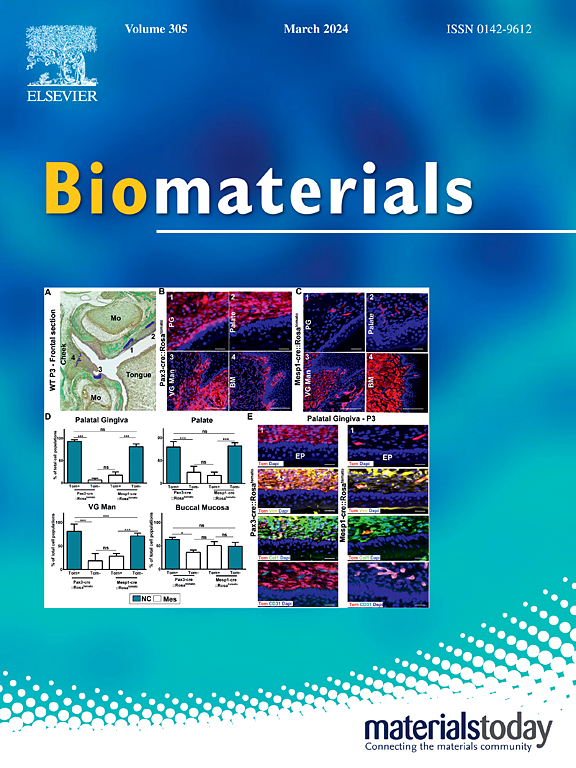A transcatheter mitral valve clip with a central filler for mitral valve regurgitation
IF 12.8
1区 医学
Q1 ENGINEERING, BIOMEDICAL
引用次数: 0
Abstract
Despite the advantages of transcatheter edge-to-edge repair (TEER) devices for treating mitral regurgitation, challenges such as difficulties in leaflet grasping and clip dislodgement remain in clinical practice. In this study, we present the first detailed disclosure of a novel transcatheter mitral valve clip, the DragonFly, highlighting its material composition, design features, and associated benefits. The valve clip is constructed of nickel-titanium alloy, stainless steel, cobalt-chromium alloy, and polyethylene terephthalate, incorporating adjustable arms, grippers, and a unique central filler. The central filler, made of nitinol, offers remarkable compressibility and shape recovery. The whole valve clip can endure over 400 million fatigue cycles and ensure a robust grasp on valve leaflets at varying angles. The clip presents sufficient grasping force to prevent valve dislodgement, and the adjustable design accommodates various patient anatomies. Comprehensive biocompatibility assessments confirmed adherence to ISO 10993 standards through in vitro and in vivo experiments, including large-animal studies. The results demonstrated that the valve clip successfully creates a stable double-orifice structure without negatively impacting cardiac hemodynamics and has good biocompatibility. Overall, the DragonFly valve clip constitutes a technological advancement in the field of minimally invasive interventions for mitral valve disease, offering more treatment options for high-risk patients.

求助全文
约1分钟内获得全文
求助全文
来源期刊

Biomaterials
工程技术-材料科学:生物材料
CiteScore
26.00
自引率
2.90%
发文量
565
审稿时长
46 days
期刊介绍:
Biomaterials is an international journal covering the science and clinical application of biomaterials. A biomaterial is now defined as a substance that has been engineered to take a form which, alone or as part of a complex system, is used to direct, by control of interactions with components of living systems, the course of any therapeutic or diagnostic procedure. It is the aim of the journal to provide a peer-reviewed forum for the publication of original papers and authoritative review and opinion papers dealing with the most important issues facing the use of biomaterials in clinical practice. The scope of the journal covers the wide range of physical, biological and chemical sciences that underpin the design of biomaterials and the clinical disciplines in which they are used. These sciences include polymer synthesis and characterization, drug and gene vector design, the biology of the host response, immunology and toxicology and self assembly at the nanoscale. Clinical applications include the therapies of medical technology and regenerative medicine in all clinical disciplines, and diagnostic systems that reply on innovative contrast and sensing agents. The journal is relevant to areas such as cancer diagnosis and therapy, implantable devices, drug delivery systems, gene vectors, bionanotechnology and tissue engineering.
 求助内容:
求助内容: 应助结果提醒方式:
应助结果提醒方式:


